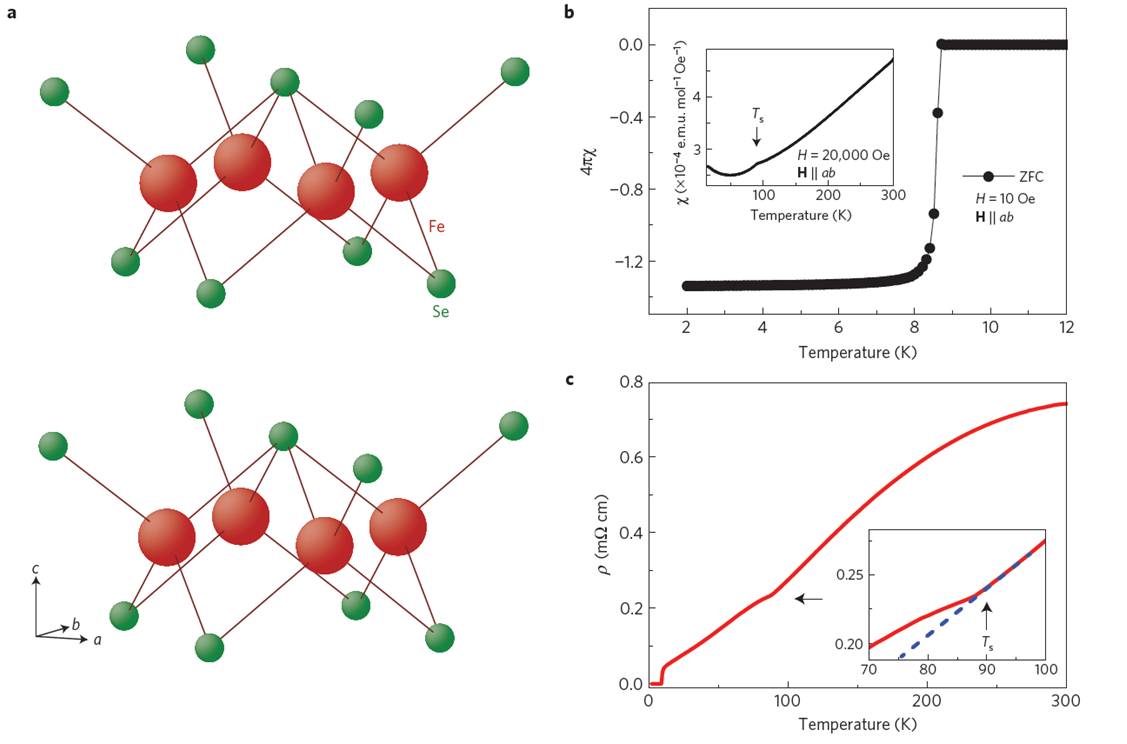Behind Electron Binding in Iron-based Superconductors - Dr. Mahmoud Abdel-Hafiez and Dr. Xiao-Jia Chen
DECEMBER 7, 2015
International collaborations including HPSTAR physicists (Dr. Mahmoud Abdel-Hafiez and Prof. Xiao-Jia Chen) have studied one member of the recently discovered family of superconductors based on iron compounds and find this exotic form of superconductivity to have complex, multi-gap character. Additionally, the interplay between spin fluctuations, nematicity and superconductivity is well reported. A fact of principal importance for understanding the mechanisms of superconductivity is that the superconducting gap width never becomes zero around the constant-energy Fermi surface. Results of this work were published in two of the leading physical journals of the world, Physical Review B and Nature Material. Multiple techniques, in particular; specific heat, magnetization, transport, penetration depth, scanning tunneling microscopy and neutron scattering, have been used to achieve these studies.
After the discovery of high temperature superconductivity in complex copper oxides (cuprates), exotic superconductivity exhibiting certain unexpected properties was found also in certain layered iron-based compounds. And though the critical temperatures in these new substances are still lower than in cuprates, one can predict with certainty that in the field of condensed matter physics, an "iron age" should follow the current "copper age". Superconductivity in Fe-based emerges when the magnetic order is suppressed by charge doping or by applying an external pressure, and takes place within FeAs, FeP, or FeSe crystallographic planes. These planes are separated by layers of other elements serving as charge reservoirs.
Iron-based superconductors studied by the authors were discovered quite recently, in 2008. Immediately after being discovered, these compounds set a large number of questions before the investigators. And there are very few satisfactory answers to these questions. The authors selected iron selenide known for having the simplest lattice structure among all the iron-based superconductors, thus being the ideal target for a deeper study. Mahmoud Abdel-Hafiez says such objects are studied in all the leading laboratories of the world. Interestingly, if the tetragonal FeSe system is submitted to a pressure of 8.9 GPa, a huge enhancement of the Tc up to 36.7 K is obtained.
The majority of parent and under doped compounds of iron-based superconductors exhibit a stripe-type long range antiferromagnetic order which is accompanied by a nematic order. Therefore, there is a great deal of interest and excitement in understanding the microscopic origin of nematicity in iron based superconductors. This is because the interaction that drive nematic order may also mediate the Cooper pairing. However, it is under heated debate whether the nematic order is driven by spin or orbital fluctuations. Orbital fluctuation mechanism produces a sign preserving s++-wave pairing, which does not have a relative sign change of the order parameters between the electron and hole pockets. While the spin fluctuation mechanism favors a sign-changing s-wave pairing, where the electron and the hole Fermi surfaces have the order parameters with opposite signs. Additionally, in the spin-fluctuation-based pairing theory both singlet and triplet superconducting states with the possibility of order-parameter nodes are reported. If orbital ordering is the efficient cause, the phase below the nematic breaks C4 symmetry, and quantum fluctuations associated with this phase are nematic in character. Our recent neutron scattering measurements reveal substantial spin fluctuations in the tetragonal phase in FeSe.

Caption: a, Schematic diagram of FeSe crystal structure. b, The DC magnetic susceptibility measurements on the single-crystalline FeSe sample. A sharp superconducting transition is observed at Tc = 8.7 K. The inset shows the susceptibility measured in a magnetic field of H = 20 kOe. c, In-plane resistivity as a function of temperature. The inset shows data around Ts = 90 K on an enlarged scale. Magnetic fields up to 9 T parallel to the c axis.
In the experiment described, external field and temperature dependences of the critical parameters were studied, primarily of the so-called "first critical field" (the weakest magnetic field capable for penetrating the lattice). The obtained information proved to be of great importance for further analysis of the superconductivity mechanisms in iron-based superconductors. Furthermore, Experimental results argue that the iron selenide superconductivity originates either from strong modulation of the energy gap width or from existence of two energy gaps with the widths different by an order of magnitude. An important result, according to the authors, is that the gap width never becomes zero at the Fermi surface. More interestingly, Neutron scattering data reveal a substantial stripe spin fluctuations, which are coupled with nematicity and are enhanced abruptly on cooling to below Ts.
These studies have been published recently by:
(i) Mahmoud Abdel-Hafiez et al., Physical Review B (91, 165109 (2015)),
(ii) Qisi Wang et al., Nature Material DOI: 10.1038/NMAT4492 (2015), and
(iii) S. Moore et al., Physical Review B 92, 235113 (2015).
"The experimental results presented in these articles may be of much help for the theorists currently developing the theory of one of the most enigmatic and intriguing quantum phenomena that finds more and more applications in modern technology", said Mahmoud.
